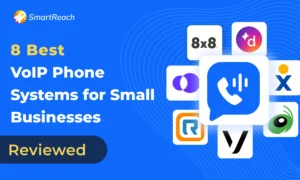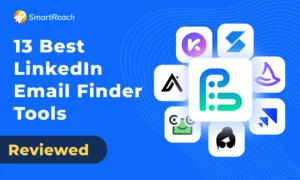How Do Top SAAS Companies Position Products for Value?
When you work in tech, it can feel natural to lean on features. Faster speeds, stronger security, more integrations – it can feel like these are the most important factors. They sound good on paper, but buyers aren’t just shopping for specs.
They want to know what the product will actually do for their business, beyond the features. Will it lower costs, save time, or open new opportunities? These are important questions clients are bound to ask. Positioning products for business value is about telling that story.
Why Features Aren’t Enough
A feature list is like reading the ingredients on a recipe. You see flour, eggs, sugar, but you still wonder how the cake will taste. Buyers do the same thing when they see a string of technical claims. Without context, they do not know what those claims mean for their bottom line.
Positioning for value takes the same information and ties it to outcomes. Instead of saying your tool automates reporting, you show how it cuts ten hours of manual work every week and boosts income opportunity at the same time. For example, sales automation platforms like SmartReach don’t just send emails – they free up sales teams from repetitive follow-ups, allowing SDRs to focus on high-value conversations that close deals. That’s the difference between listing a feature and demonstrating business value.
Buyer Personas Affect the Angle
Not every buyer sees value the same way, and that’s because businesses are unique, as are the leaders in each department of the business. The head of finance wants to hear about cost reduction. An IT leader wants to hear about resilience and risk management.
Marketing teams care about speed to market. Sales leaders want to see improved conversion rates and pipeline velocity. When positioning a sales engagement platform like SmartReach, an SDR might value the time saved through email sequencing, while a VP of Sales focuses on the 30% increase in reply rates and the measurable impact on quarterly revenue.
Buyer personas help you tailor the same product story in different ways. When you know what each group values, you can highlight the parts of your product that match.
Making ROI and TCO Simple
ROI (Return on Investment) and TCO (Total Cost of Ownership) are classic business metrics. Still, these metrics often sound abstract until you anchor them in the buyer’s world.
Research shows that low-quality code can cause defect rates to spike fifteenfold and issue resolution times to more than double. When you position your product around reliability and efficiency, you help buyers picture savings in real dollars and hours.
If your service reduces monthly infrastructure costs by fifteen percent, show the calculation. If your system cuts maintenance tickets in half, translate that into salary savings. For SAAS products, this might mean calculating how many hours your sales team saves each month. If SmartReach’s email automation saves each SDR 10 hours per week, and you have a team of 5 SDRs at $30/hour, that’s $6,000 in monthly labor savings – plus the opportunity cost of those 200 hours redirected toward closing deals.
You can even introduce simple planning tools. A data usage calculator, for example, lets companies forecast what remote workers will need in a month and pick the most cost-effective eSIM tier. Tools like this turn financial conversations into something visual and clear.
Pilot Plans and Proof
Pilot programs give buyers a low-risk opportunity to test solutions in real contexts. That matters because research shows 85% of AI projects never make it to production, and fewer than half of those that do return meaningful value.
Properly structured pilots bridge that gap. They get to measure results in real time, which builds confidence for a larger rollout. In the sales automation space, this might look like a 30-day pilot where a team runs SmartReach alongside their existing process, comparing reply rates, meeting bookings, and time investment. The data speaks for itself.
Proof points work in the same spirit: case studies, customer quotes, benchmark reports – anything that shows other companies found measurable success. For instance, if a B2B company improved their demo booking rate by 40% after implementing structured email sequences, that’s tangible social validation that moves the conversation forward.
Impactful Storytelling
You can have all the charts and numbers in the world, but humans still remember stories more than spreadsheets. Share a scenario where a client struggled with inefficiency, implemented your product, and freed up their team to focus on growth.
Keep the story relatable, even if the product is highly technical. For instance, consider a sales team struggling with manual outreach – their SDRs were burning out sending 50 personalized emails daily, with reply rates hovering at 2%. After implementing an email automation platform, they scaled to 200 targeted prospects per day while improving reply rates to 8%. The team didn’t just save time; they redirected energy toward qualifying warm leads and closing deals.
Or consider a team member on a crucial project working from an international hub like Bangkok. Their ability to stay connected and productive is a tangible part of a product’s value. In such a story, a specific detail like choosing the eSIM for international travel can illustrate how a solution provides real-world reliability and cost-effectiveness. This balance of narrative and data makes buyers connect emotionally while still having the hard facts they need.
Value Mapping as the Secret Ingredient
One way to bridge the gap is value mapping. Think of value mapping as drawing a line from product capability to business outcome and then attaching a number. For example, if your platform reduces downtime by 5%, what does that save in lost revenue? If it boosts customer satisfaction by three points, how does that affect renewals?
For sales technology, value mapping might connect email deliverability improvements to pipeline impact. If better email warm-up increases inbox placement from 70% to 95%, and that means 100 more prospects see your message each week, how many additional meetings does that generate? At a 5% meeting booking rate, that’s 5 extra meetings per week, or 20 per month. If your close rate is 20%, that’s 4 additional deals. Now multiply by average deal size.
Numbers help decision makers compare options. Value positioning makes sales conversations less about features and more about impact.
Last Thought
Positioning technical products for business value is not about abandoning features. It is about layering them with outcomes that matter to the people making decisions. Value mapping ties capabilities to results. Personas adjust the angle for different stakeholders.
ROI and TCO ground the conversation in numbers. Pilot programs and proof points build trust. Stories make the details memorable.
When you combine these elements, your product is no longer just another tool in the market. It becomes a clear path to business advantage – and that is the language buyers understand. Whether you’re selling sales automation like SmartReach, AI solutions, or connectivity tools for global teams, the principle remains the same: show the value, not just the specs.
FAQs
Q1. Why is it important to position tech products for business value?
Because business buyers care less about specs and more about measurable outcomes. Positioning for business value helps them understand how a product affects revenue, cost, and efficiency.
Q2. What’s the difference between product features and business value?
Features describe what a product does; business value explains what those features achieve — for example, saving time, reducing costs, or improving customer satisfaction.
Q3. How can I communicate ROI and TCO effectively?
Tie metrics to real-world outcomes. Instead of abstract numbers, show how your product reduces expenses, saves labor hours, or improves long-term returns.
Q4. What are proof points, and why do they matter?
Proof points are case studies, customer quotes, or pilot results that validate your claims. They build trust and make your value proposition more credible.
Q5. How does storytelling help in product positioning?
Stories humanize your product, helping buyers visualize its impact in relatable scenarios instead of abstract technical terms.
Q6. What is value mapping, and how is it used in sales?
Value mapping connects product capabilities to measurable business outcomes, allowing sales teams to demonstrate the direct financial and operational impact of the product.



